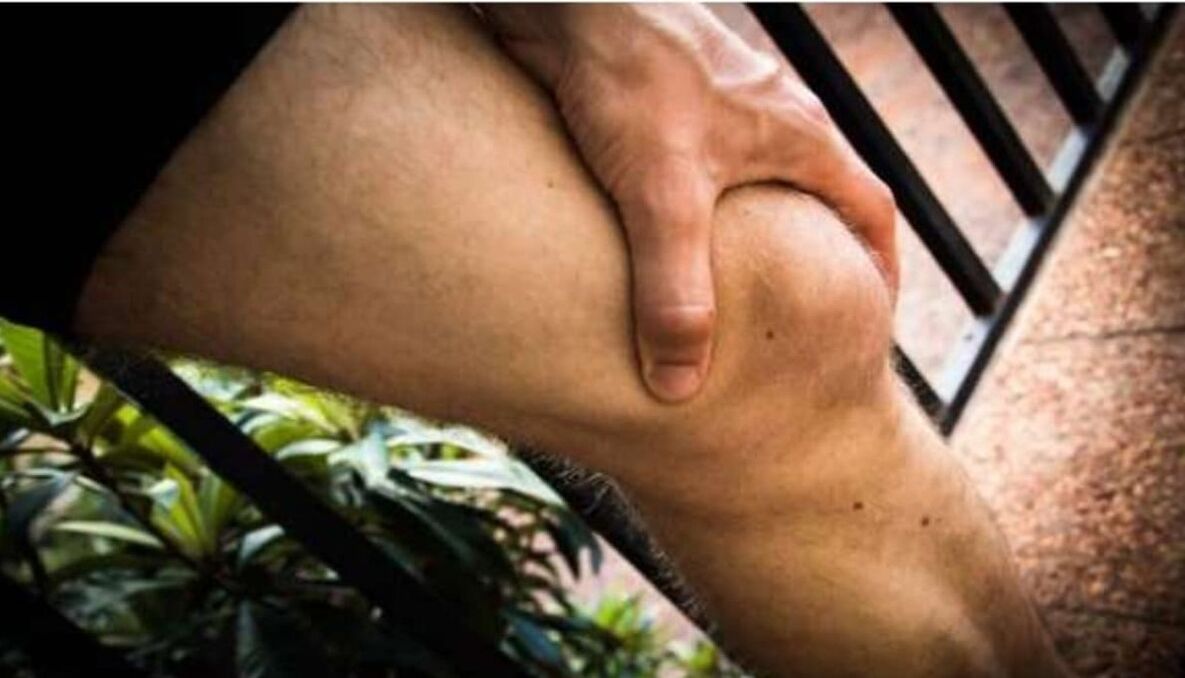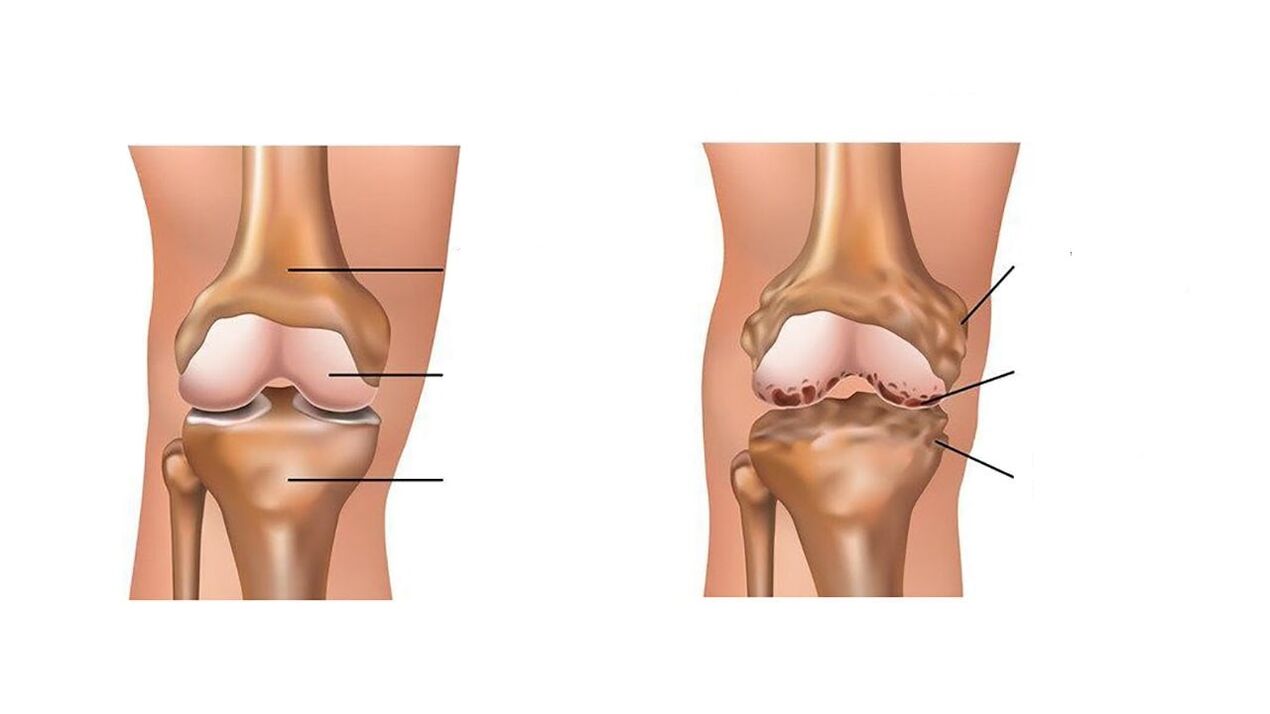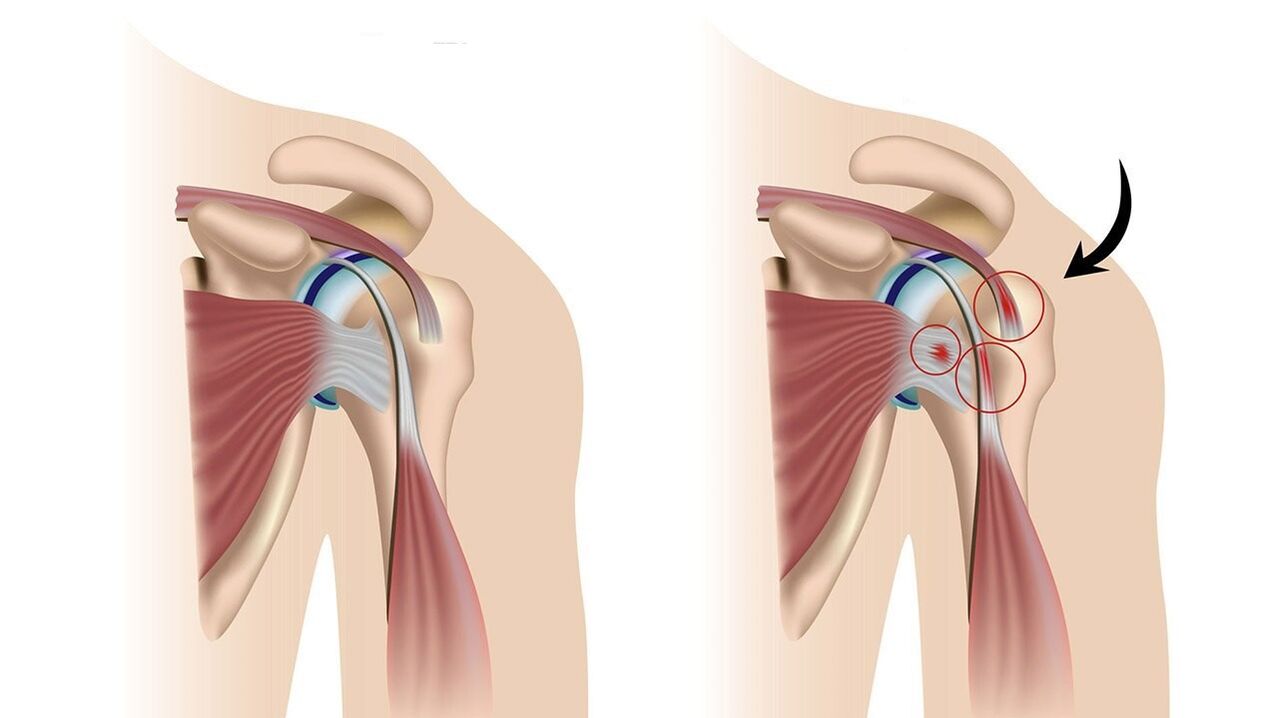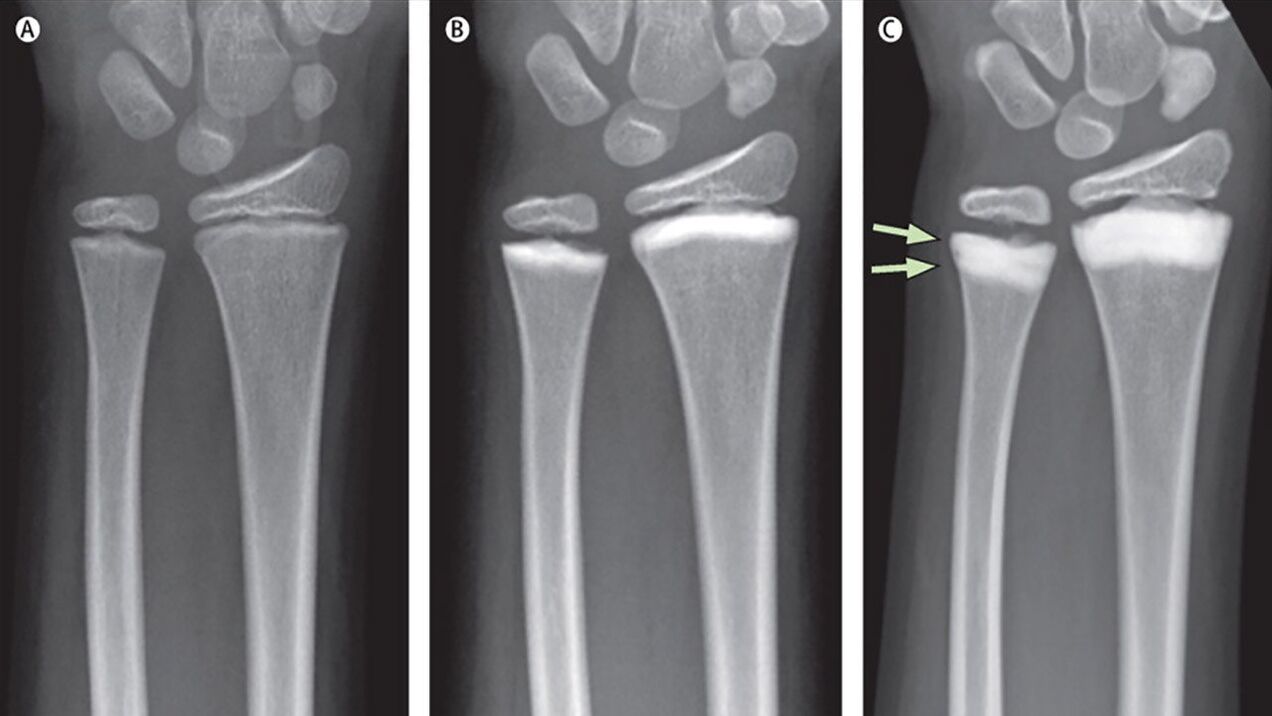Symptom: joint pain.

Possible causes: trauma, arthritis, osteoarthritis, osteoarthritis.
Doctor: The therapist records the complaints, sends them for examination and, based on the results, refers the patient to a doctor with a narrower field of expertise.
Treatment: each prescribed individually.
Prevention: relieving the stress on the joints, maintaining a healthy lifestyle, timely examination by a doctor, diet.
Why do joints hurt?
Joints can hurt for two reasons: arthritis, inflammation of the joint tissue, or osteoarthritis (osteoarthritis), a degenerative-dystrophic process, that is, destruction of the bone-cartilaginous elements of the joint. The diagnosis should be made by a doctor, but you can manage symptoms yourself.
Inflammation in arthritis is like a forest fire: everything starts violently, the joint swells and is very painful even at rest, and if you try to make the slightest movement, the pain increases. The skin in this area will turn red and get hot.
With osteoarthritis everything is different: the joints are initially slowly and imperceptibly destroyed. Joint pain, initially minor, painful, only occurring when moving, quite tolerable, increases over time, becomes constant and strong enough to disturb rest and sleep. The insidious thing about this pain is that it is delayed in relation to the pathological process that is going on in the joint and only occurs when x-rays show signs of destruction of the joint in question, which, unfortunately, is irreversible. This is the proliferation of thorns (marginal osteophytes) along the edge of the articular surfaces of the bones that make up the joint, narrowing of the joint space and signs of osteosclerosis - areas with a pathological increase in bone density. If osteoarthritis affects a joint, for example the knee, the biomechanics change and the function of the adjacent joints - hip and ankle - is disturbed. They experience increased and at the same time uneven load and wear out faster as a result. Arthrosis affects joint by joint, the pain intensifies and can spread to all new joints.

Types of pain
The type and nature of pain sensations will depend on the cause that caused it.
Joint pain with flu and acute respiratory infections against the background of high (up to 40 ° C) temperature. This pain will go away on its own once the temperature returns to normal and does not require special treatment.
For arthritis pain:
- Sharp,
- painful,
- pulsating
- Shoot,
- occurs at rest and intensifies with certain movements,
- give to neighboring areas,
- When probing (palpation) it hurts everywhere, over the entire joint surface, but especially along the joint space.
Periarthritis is especially unbearable - inflammation of the tissues around the joint (sacs, tendons, and ligaments). How everything happens can be explained using the shoulder joint as an example. At first the joint starts to hurt. The pain very quickly becomes unbearable, almost unbearable. It gives off to the shoulder blade and neck area, increases (and is often accompanied by a crunch) when you try to stretch your arms sideways at shoulder level or bend your elbows and bring them behind your back. There are pain points at the end of the collarbone, which rests on the shoulder joint in front, and in the same place at the back. If you press on it with a finger, the pain increases. With such acute sensations, it is necessary to immobilize the joint - it is necessary to hang the hand on a cloth, try not to move it. This is an essential prerequisite for the success of the treatment.

Important! to choose an adequate analgesic and anti-inflammatory therapy as soon as possible after the examination. This will reduce the severity of joint inflammation, relieve pain and improve quality of life.
With osteoarthritis, joint pain is different:
- The pain is initially light and inconsistent, its character is wavy - at certain times it is absent for weeks or even months. But over time, without treatment, the waves of pain get stronger and more frequent, and the gaps between them get smaller.
- Pain at the beginning: its explosion occurs the first time you try to take a step, raise an arm, bend. Then the joints seem to develop and the pain subsides.
- Mechanical rhythm - the joint starts to hurt when you put weight on it. Initially, pain occurs with high loads - lifting weights, walking up stairs, walking for a long time, doing sports. Later, even small movements echo the pain. But at the same time, unlike the unpleasant sensations in arthritis, the pain in osteoarthritis disappears if you give the joint a rest and give it rest. Doctors therefore speak of mechanical rhythm: movement triggers pain, rest alleviates it.
- Night discomfort. There is no pain at rest, but lying down is uncomfortable, all the time you want to change your posture, find a position where you can forget about your joints and spine, but it doesn't work. The joints hurt and that's it! The shackles of the morning: woke up, there is no pain yet, but it was as if you were shackled or tightly wrapped - the joints do not obey, but gradually the feeling of stiffness disappears, freedom of movement in the joint is restored.
- Protective attitude. When a joint hurts, you'll want to take what is called an analgesic - a pain relieving position that makes it easier. This is best seen in the example of the spine: it also consists of joints. If either of them becomes wedged and a nerve root gets into the bone vise with it, an acute pain based on sciatica develops. Anyone can diagnose a sciatica after seeing the poor man distorted. In fact, the body tries to reduce the pain to a minimum with the help of this "crookedness", supported by muscle cramps.
Osteoarthritis of the hip and knee
Pain with a lesion of the hip joint (most often unilateral) is localized in the thigh and radiates to the knee. He usually gets sick in the second half of the day, when he has already worked a lot. The pain increases as you walk, and when you are at rest it weakens and disappears.
Knee joints usually suffer from both at the same time. They bend easily and start to hurt when you bend. The so-called stair symptom is characteristic of the knee lesion. The descent is more painful than the climbing; Patients do this by turning sideways. Sometimes the joint is wedged in a bent position due to a bone growth (osteophyte) or its fragment (such a "lost" bone fragment in the joint is called a "joint mouse"). A joint block is accompanied by increased pain when trying to flex or straighten it.
Mobility problems in the knee are not always associated with arthritis. Sometimes the joint wedging can be "wrong". The most common causes of pseudo-blocked knees include:
- Edema (excess fluid in the joint capsule can interfere with the complete flexion and extension of the joint).
- Inflammation (inflammation of the tissues in the knee, such as in rheumatoid arthritis and gout).
- Incorrect movement of the kneecap in the joint (accompanied by severe pain).
- Irritation of the tissue that lines the joint.
- Knee Injury (Any serious knee injury, such as a sprain, can cause muscle spasms).
Important! If the joint is jammed, active movements in the joint are impossible, it is necessary to seek medical help from an orthopedic traumatologist as soon as possible - an emergency room, clinic, hospital. Don't hesitate to call the ambulance - this is a good reason to call because you won't get far on one leg and you will even get to the clinic yourself.
diagnosis
Due to the nature of the pain and the appearance of the affected joint, a preliminary diagnosis (osteoarthritis or osteoarthritis) can also be made by a layperson. But hurry to the district clinic to confirm the suspicions!
Which doctor should I go to?
If you have joint pain, make an appointment with a local therapist. He performs the functions of a medical dispatcher: He records complaints and clinical symptoms, instructs the patient for an examination and, based on the results, decides which doctor should consult the respective patient. A wide variety of specialists are involved in maintaining joint health:
- Arthrologist.
- Orthopedic traumatologist.
- Rheumatologist.
- Vertebrologist (when the joints of the spine are affected).
- Podiatrist (when it comes to the ankles).
- The surgeon.
- Oncologist.
- Neurologist (if the joint has already been treated, but the pain remains in it).
- Nutritionist (for joint pain due to metabolic disorders such as gout or if you are overweight).
What tests to pass and research?
The exam begins with the simplest - a clinical (from a finger) and biochemical (from a vein) blood test for signs of inflammation, as well as a general urine test. In some diseases of the joints, the kidneys are involved in the pathological process. Excess uric acid in the urine can indicate gout as a cause of joint disease.
A laboratory examination of the synovial fluid that is in the joint will help identify the inflammatory process and clarify its nature. It is obtained by puncturing the joint capsule - puncture. If necessary, a histological examination is carried out on a fragment of the synovial membrane lining the joint cavity from the inside.
A proven diagnostic method is to x-ray the joint in two standard projections. It helps visualize joint space narrowing, osteoarthritis, osteoporosis, and osteosclerosis (areas of decreased and increased bone density).

Magnetic resonance tomography currently provides comprehensive information about the condition of the joint.
Which joint diseases can cause pain?
There are more than a hundred such diseases. Osteoarthritis is widespread in the elderly, and rheumatoid arthritis and injuries (bruises, fractures, ligament injuries) in young people.
"Along with arterial hypertension, commonly referred to as hypertension, joint disease is at the top of the list of the most common reasons to seek medical help. And the chronic pain that patients experience at the same time and because of which they cannot live and work fully are not only a medical problem, but also an important social problem, says the doctor, professor of rheumatology. - Osteoarthritis is the most common of all joint diseases. 97% of those over 65 suffer from this disease. And when we talk about chronic inflammatory diseases of the joints - arthritis, this is where rheumatoid arthritis comes to the fore. It's not a gift either, and not just because of the pain syndrome: within 3-5 years of its onset, this type of arthritis inevitably ends with the patient being assigned a disability group.
How to urgently get rid of joint pain
Painkillers are able to overcome pain quickly: Pain cannot be tolerated anyway if it does not want to change from acute to chronic. This metamorphosis can happen very quickly - in 3-4 weeks, so getting rid of joint pain should be an urgent task. The joint starts to hurt as soon as you put weight on it. Therefore, if you are in pain, you should take a non-steroidal anti-inflammatory drug (NSAID) with good analgesic effects half an hour before any physical activity.
In addition, if the joint pain worsens at night, the doctor will recommend taking metamizole sodium as well as drotaverine with nicotinic acid before bed to improve local blood circulation.
Local therapy
NSAIDs have one formidable side effect - they can damage the lining of the stomach or even cause ulcers, so they try to apply them topically as part of all types of ointments and gels that have anti-inflammatory and analgesic properties. They are usually rubbed into the skin over the affected joint twice a day. Pain is also relieved by special patches with magnetic powder that are stuck to the joint or spine.
What if the joints are left untreated?
If left untreated, joint disease can lead to loss of freedom of movement and disability. If one or more large joints are affected, they can be replaced with artificial ones. Multiple joint damage (polyarthritis) is usually the result of a general disease of the body, for example psoriasis. In this case, it is all the more dangerous to trigger the disease because it progresses quickly and can end your life quite quickly.
Conclusion
Joint pain is known to almost everyone and occurs for two main reasons - inflammation (arthritis) or destruction of bones and cartilage (osteoarthritis). Interestingly, the joints on the arms and legs hurt in different ways. In the upper extremities, in contrast to the lower extremities, it is usually not the joints themselves that are affected, but the surrounding tissue (tendons, ligaments, pockets). This is due to the different loads on the arms and legs - dynamic and static. Joint pain needs to be tackled from day one: very few people will enjoy the prospect of becoming disabled for the next 10-15 years. As part of preventing joint diseases, it is important to lose extra pounds in order to reduce the stress on the joints and cope with concomitant diseases (allergies, diabetes mellitus).

































